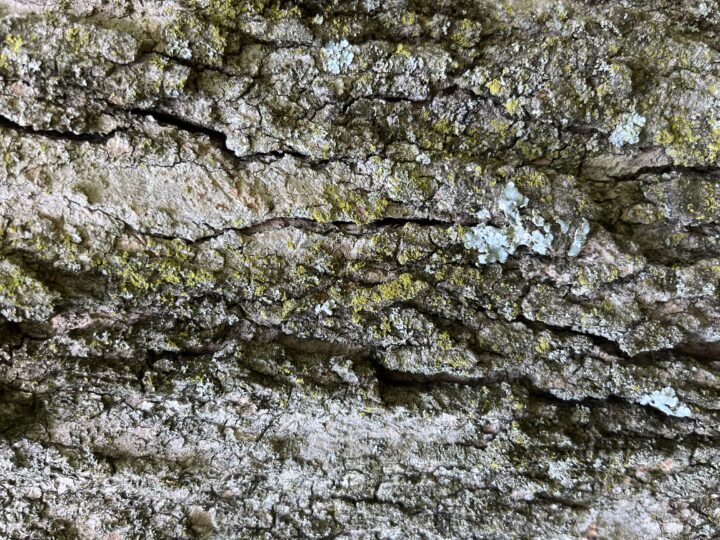Plants of Whetstone Park!
PART ONE: Introduction to Whetstone Park
Whetstone Park is a community park located in Clintonville, Ohio (just north of OSU!). In the early 1800s, the land was a family farm. The land was purchased and converted into a park starting in 1944. In 2004, part of the land was converted into a native Ohio prairie including vernal pools and a woodland buffer. Another interesting aspect is the Park of Roses located within Whetstone Park!
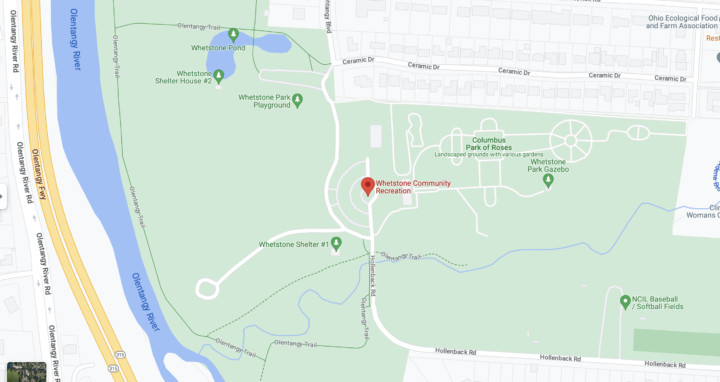
Poison Ivy (Rhus radicans) can be found all around Whetstone Park! Poison Ivy can grow as a shrub, a trailing vine, or climbing up trees. All parts of the plant contain a skin irritant, making this plant dangerous to touch. The leaves are notable because they are trifoliate (leaflets in three, let it be!).
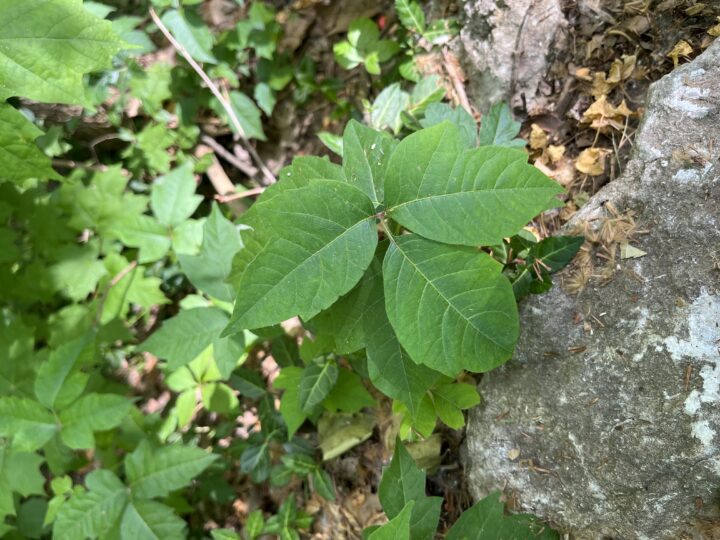
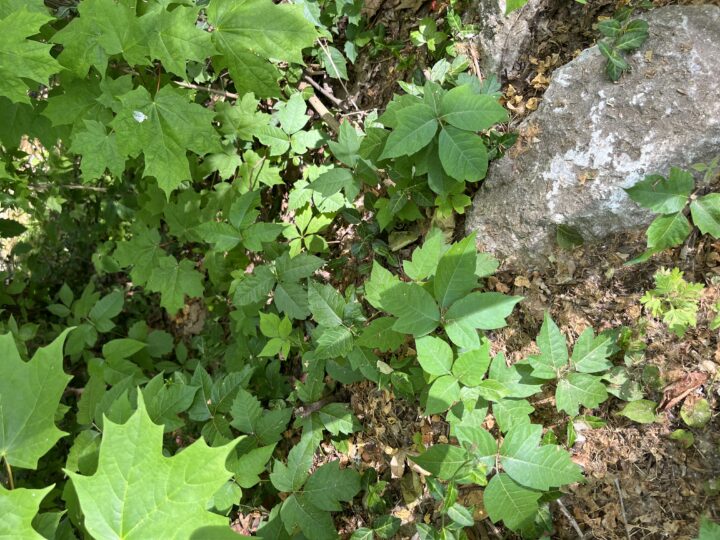
PART TWO: Flowers and Inflorescences
The first flower I identified was Cow Parsnip (Heracleum maximum). Cow Parsnip belongs to Apiaceae. It has large clusters of white flowers, and the flowers are radially symmetrical. There are 5 petals and 5 sepals, and they are separate rather than fused. The ovary position is hypogynous, and the gynoecium has two united carpel. This type of inflorescence is an umbel. Cow Parsnip produces flat, heart-shaped schizocarps. I found this plant in an open field (with lots of other Cow Parsnip!).
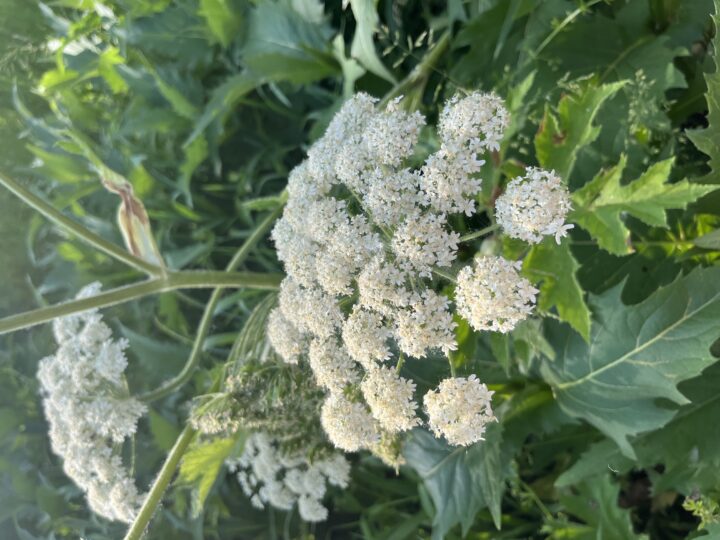
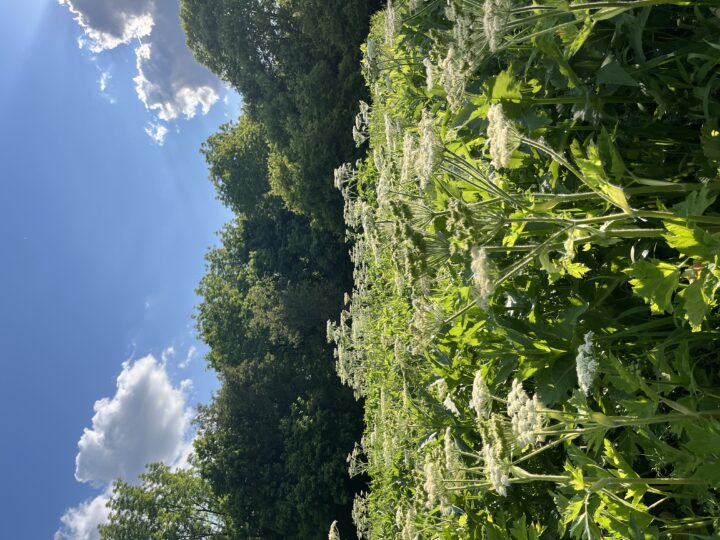
The second flower I identified was Common Fleabane (Erigeron philadelphicus). Common Fleabane belongs to Asteraceae, and it has 100-150 ray flowers. They are radically symmetrical. The corolla is zygomorphic, and there are 5 fuzed petals. The androecium has 5 fused stamens. The ovary position is epigynous, and the gynoecium type is syncarpous. The inflorescence type is panicle. The fruits are achenes. This plant was located along a trail near a prairie.
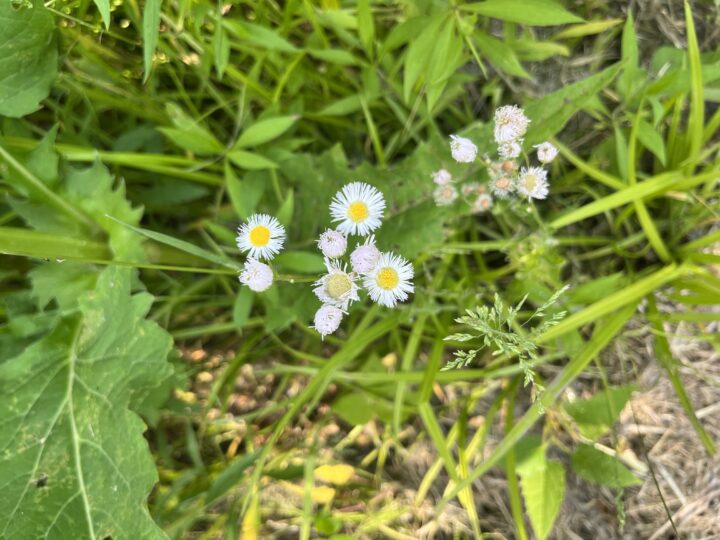
The third flower I identified was Creeping Buttercup (Ranunculus repens). Creeping Buttercup belongs to Ranunculaceae, and they have small, yellow flowers. They are radially symmetrical. They are simple, and have 3 sepals, 5 petals, and a large number of stamens and carpels. The ovary position is hypogynous, and the gynoecium is apocarpous. The inflorescence type is panicle. The fruits are most likely berries. This plant was located along a trail near a prairie.

The fourth flower I identified was Ground Ivy (Glechoma hederacea). Ground Ivy belongs to Lamiaceae, and they have small violet flowers with square stems and opposite leaves. It is bilaterally symmetrical. They have 5 fused sepals, 5 fused petals, 2 stamens, and 2 fused carpels. The ovary position is hypogynous, and the gynoecium is syncarpous. The inflorescence type is raceme. The fruits are 4 nutlets. This plant was located along a trail near a prairie.
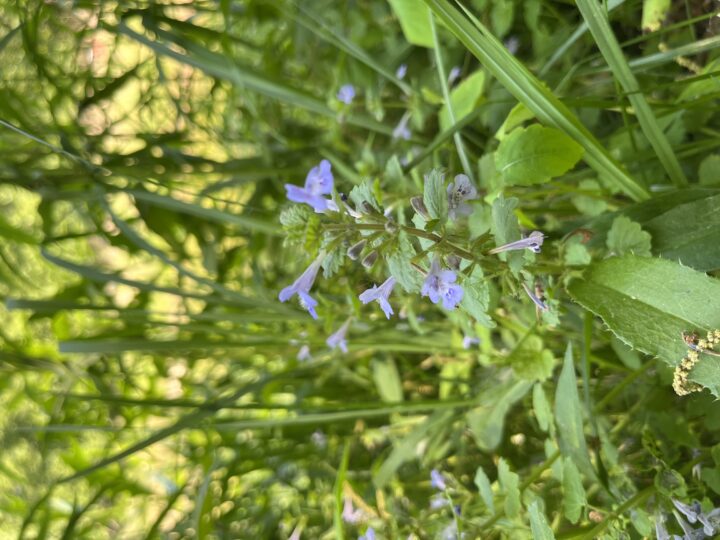
PART THREE: Invasive Plants
The first invasive plant I identified was Amur Honeysuckle (Lonicera maackii). It is native to eastern Asia, but was introduced to North America for ornamental purposes and for soil erosion control in 1896. Amur Honeysuckle poses an issue because it leafs out earlier than native vegetation, it produces a large number of berries which helps the spread of seeds, and it increases nest predation for birds. Some methods of controlling this species include physically removing small plants, pruning dense bushes, using herbicide, and prescribed burning.
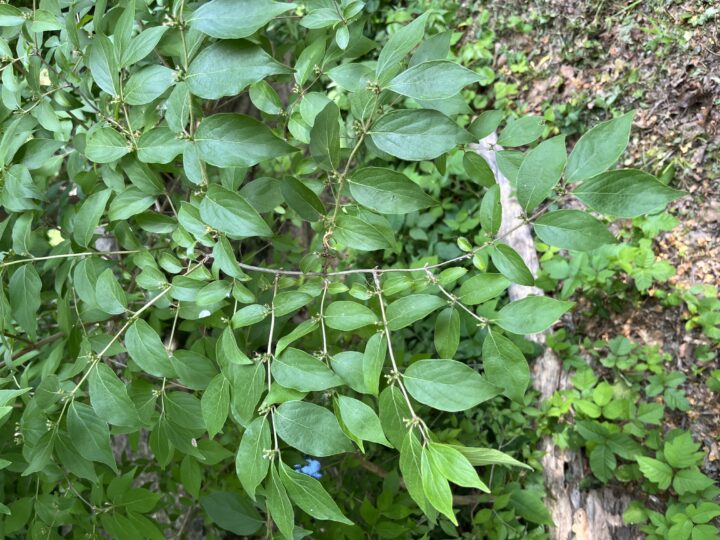
The second invasive plant is Garlic Mustard (Alliaria petiolata). It is native to Europe, but was introduced to North American for herbal and medicinal purposes in the 1800s. Garlic Mustard is found in forest edges and near streams. It reduces the growth of native plants and interferes with fungi in the soil that form symbiotic relationships with trees. Some methods of controlling Garlic Mustard include physically removing small plants, using herbicide, and potentially animals (which is currently being tested at Cornell University).

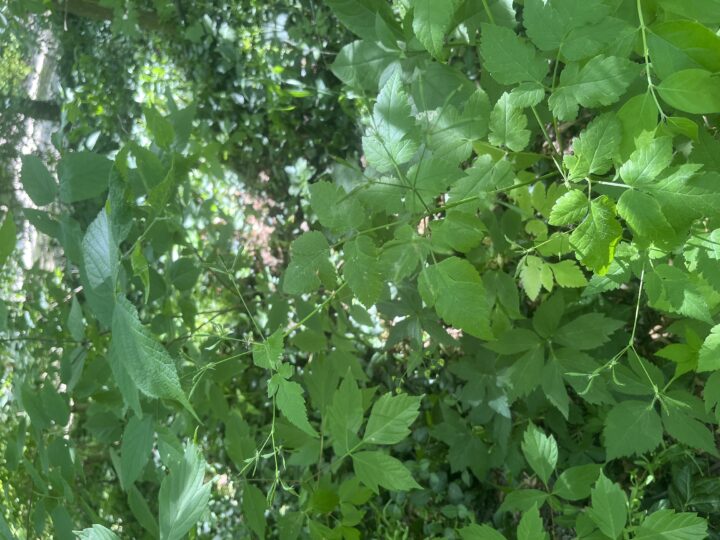
The third invasive plant is Orchard Grass (Dactylis glomerata). It is native to temperate Eurasia and North Africa, but was introduced to North America as a source of hay and pasturage. Orchard Grass grows in wooded areas, pastures, along fence rows, and in areas with history of disturbance. It is fairly aggressive and grows in dense clusters. If properly cut back often, Orchard Grass can be maintained.
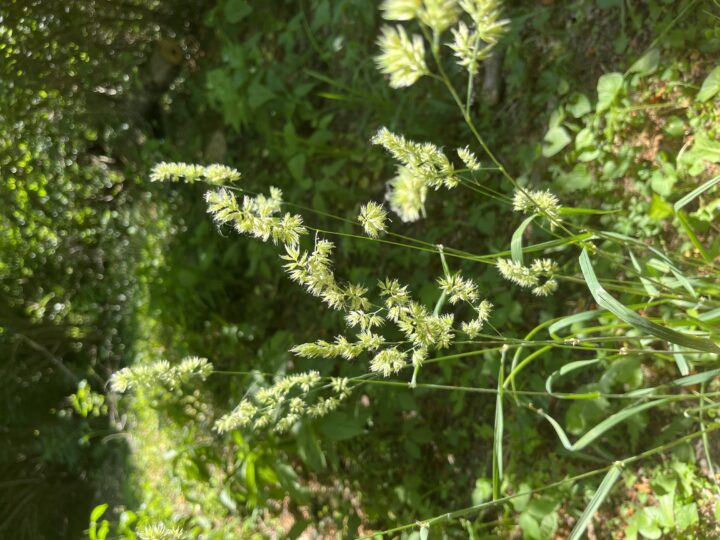
The fourth invasive plant is White Clover (Trifolium repens). It is native to Europe, but was introduced to North America via European colonists. White Clover grows best in clay and silt soil in humid environments. Since it is a spreading plant, it competes with native plants for nutrients and sunlight. White clover is best controlled with herbicides.


PART FOUR: Woody Plant Fruits Identification
The first fruit I observed was a samara. It led me to identify the tree as a Sugar Maple (Acer saccharum). I chose Sugar Maple because the fruits are in clusters and look similar to example 44 in our Fruit Key by William M. Harlow.
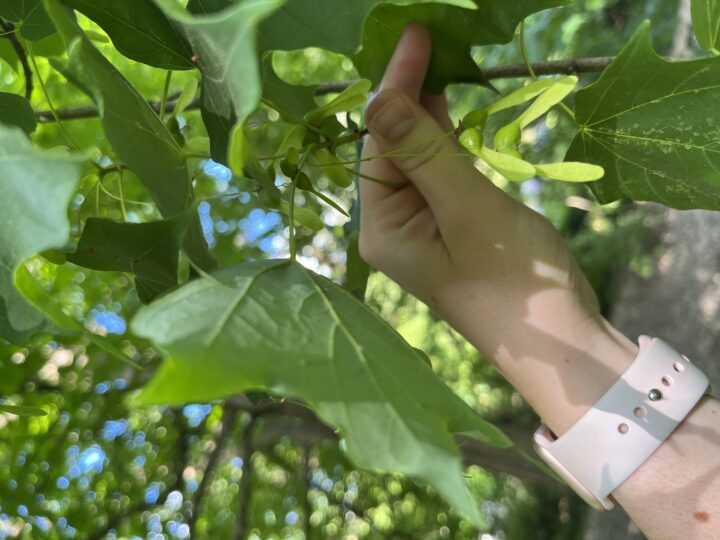

The second fruit I observed was another samara. It led me to identify the tree as a Boxelder Maple (Acer negundo). I chose Boxelder Maple because the fruits are V-shaped and look similar to example 39 in our Fruit Key.


The third fruit I observed was a berry. It led me to identify the tree as a Hackberry (Celtis occidentalis). I recognized this tree from a previous identification, but I chose Hackberry because the fruits are on long stalks, borne singly, and are more dry than juicy. They look similar to example 67 in our Fruit Key.
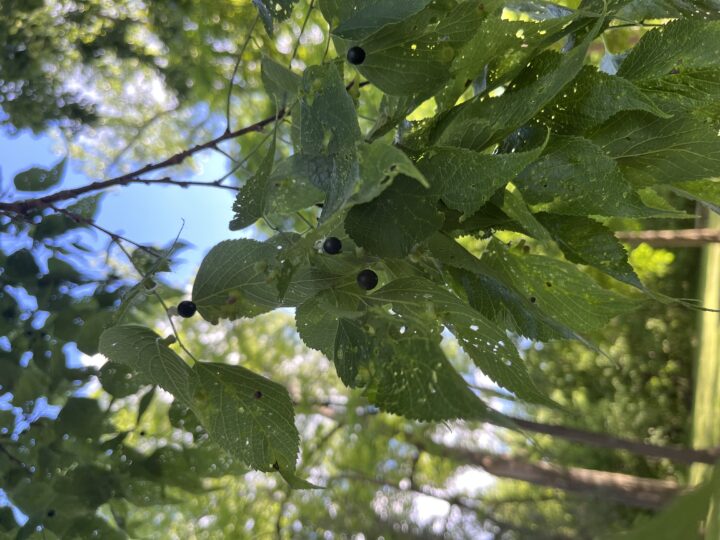

The fourth fruit I observed was a nut. It led me to identify the tree as an Ohio Buckeye (Aesculus glabra). Though I didn’t see the traditional buckeyes, I recognized the early fruit. I chose Ohio Buckeye because the capsule is spiny, but the spines are small.


PART FIVE: Mosses/Lichens
The first moss I identified was Anomodon “Poodle Moss.”

The second moss I identified was Dicranium “Broom Moss.”
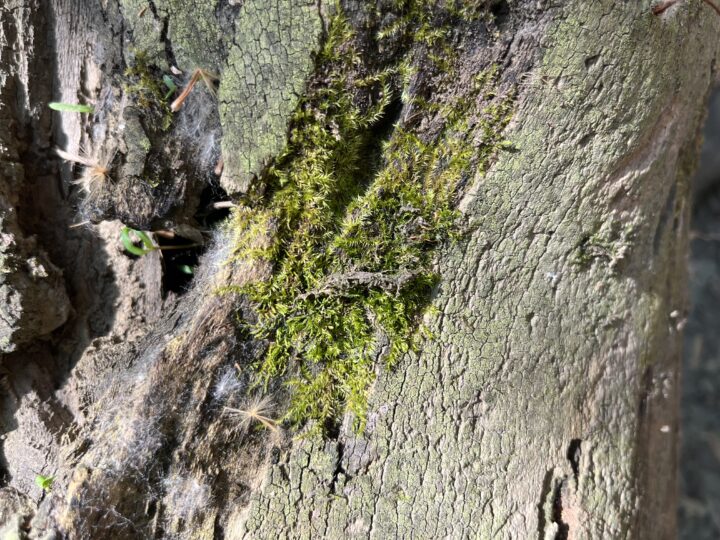
The first lichen I identified was Ruffle Lichen (perhaps Powder-edged Ruffle Lichen).
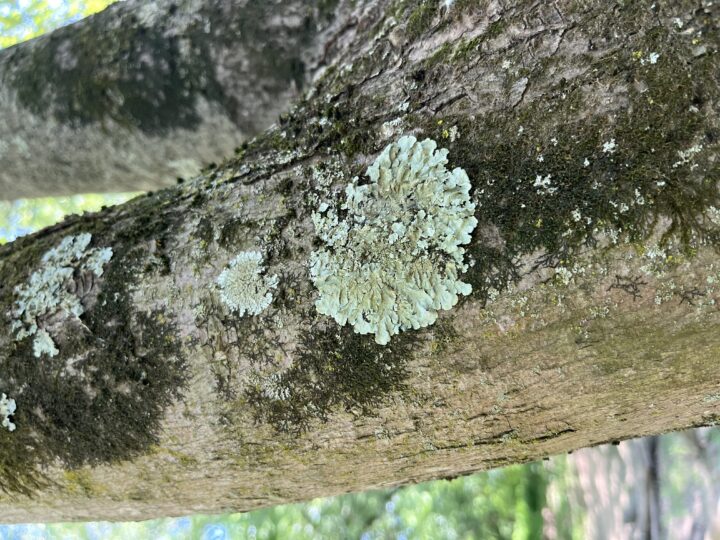
The second lichen I identified was Lemon Lichen.
